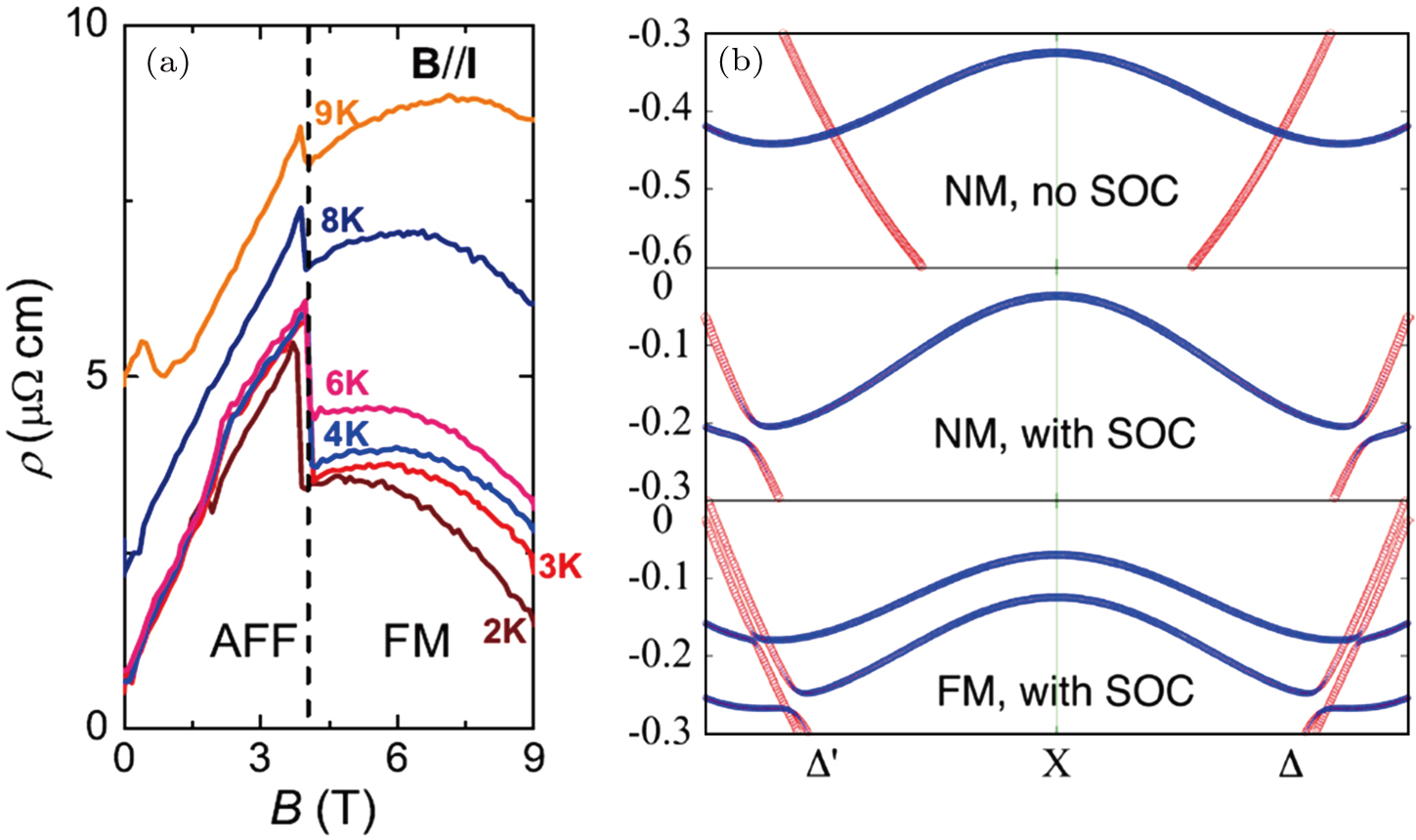Heavy fermions in high magnetic fields
Project supported by the National Natural Science Foundation of China (Grant No. U1632275), the National Key R&D Program of China (Grant Nos. 2017YFA0303100 and 2016YFA0300202), and the Science Challenge Project of China (Grant No. TZ2016004).
(a) Resistivity of CeSb as a function of field, when the applied field is parallel to the current direction. At low temperatures, a negative longitudinal magnetoresistance is observed after the transition from the antiferro-ferromagnetic (AFF) state to the field-induced ferromagnetic (FM) state. (b) Schematic diagram of how Weyl nodes occur in the field induced FM state of CeSb. The spin–orbit coupling gaps out the degenerate band crossing points, giving rise to a band inversion. The breaking of time reversal symmetry in the field-induced FM state splits the degenerate bands, giving rise to doubly degenerate band crossing points, which correspond to Weyl nodes. Both panels are reproduced from Guo et al., Ref. [
